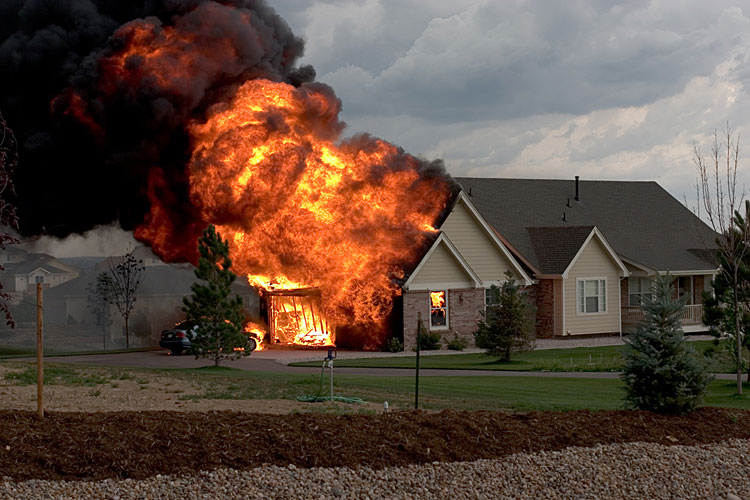By Ryan Peters, Fire Captain Aptos-La Selva Fire District

This may seem like a small and insignificant detail to add to your “to do” list, but operable and reliable detection systems save lives in house fires. Our crews have witnessed tragic losses of life and property as a result of inoperable smoke alarms and notification systems. So here’s a homework assignment: please test your smoke alarms by the end of March, it only takes a moment! Better yet, swap out the old batteries for fresh ones just to be certain your family is protected and afforded early notification in the event of a house fire. Also, as a quick reminder, when you hear an intermittent “chirping” noise coming from a smoke alarm, this is its way of telling you it needs new batteries.
According the UL analysis of residential fire dynamics studies, their experiments revealed that the time for an incipient stage living room fire to reach the “Flashover” stage (Flashover being the near simultaneous ignition of all combustible material in an enclosed area with temperatures reaching over 1000F) had decreased from 30 minutes in older traditional construction down to less than 5 minutes in modern construction.
In other words, when a fire begins in a newer residential structure, unless the fire is stopped in the incipient stage, it will grow exponentially and dangerously within just a few minutes. This is why I assign homework in the spring and fall when we change our clocks. Working smoke alarms will afford you and your family the early notification needed to assure that everyone makes it out safely.
The first arriving crew has a lot of responsibility and decisions to make in a short period of time. Dispatch will be relaying information they receive from the 911 caller to responding units, which helps us, form a game plan to complete critical tasks and address life safety issues efficiently.
On arrival we systematically address life safety issues (rescue), fire growth and exposures to neighboring structures, we deploy attack hose lines and establish water supply, deploy crews within the residence to extinguish the fire while searching for victims, provide for ventilation, place ladders for access or egress, begin salvage operations, secure electrical and gas utilities, while making sure to set up a safe means of communications and organization via the incident command system.
First arriving crews will rely on you and the information you provide to make sure life safety is addressed before we do anything else. The Fire Captain (identified by red markings on his or her helmet) will always take the time to walk a full circle around the structure and size up the situation. The first question you may be asked is whether or not everyone is out of the structure. If not, we need to know exactly where the person needing rescue might be so we can deploy firefighters to that part of the house right away. Again, life safety is our main focus.
Another goal of ours is to keep the fire as small as possible. You can help by making sure all exterior doors and windows are closed which helps limit the flow of air within the structure. With tightly sealed spaces typical of modern home construction, closed doors and windows greatly affect how quickly a fire can grow and spread.
Firefighters want to avoid the hazards of being caught in a Flashover situation and will do so by properly controlling the air flow and coordinating ventilation within the structure. Done correctly, this will keep the fire ground safer while increasing survivability for anyone who may be trapped inside the house.
Never (and I mean never) go back into your home for anything or anyone you’ve forgotten. Our crews have witnessed tragic losses of life after someone escaped a house fire, only to make the fatal mistake of going back in after something important to them. Inform the 911 dispatcher and first arriving fire crews of anyone needing rescue and we will take steps necessary to protect life safety. Our crews are trained and well prepared for the worst, and we will always rely on citizens for critical information and assistance to make sure everyone is safe.
As a small community, each of us relies on the other to do their part in keeping it safe and successful. Through communication, training, and prevention, we can lessen the frequency and hazards associated with modern residential fires. So please take a few moments to check your smoke alarms, carbon monoxide detectors, fire extinguishers, and other notification systems. They save lives and property.
March 20 is the first day of spring! Be safe everyone.
•••
For more information please visit www.aptosfire.com or call (831) 685-6690.